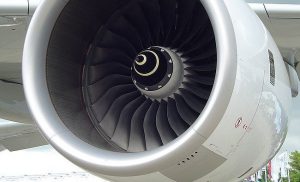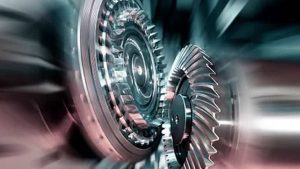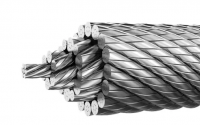Applications of Advanced Superalloy in Aerospace Industry
Nowadays, the amount of superalloy material in the world’s advanced engine development has accounted for 40%~60% of the total engine, and it is known as the cornerstone of the advanced engine.
The aero-engine is one of the most difficult parts of the aviation industry. As the aero-engine of the aircraft power plant, it is particularly important that metal structural materials should have lightweight, high strength, high toughness, high-temperature resistance, oxidation resistance, corrosion resistance, and other properties, which is almost the highest performance requirement of structural materials.
In the aero-engine, the superalloy is mainly used in four hot parts: combustion chamber, guide blade, turbine blade, and turbine disc. In addition, it is also used for the casing, ring parts, afterburner, and nozzle. As one of the high-temperature alloys, molybdenum alloys are widely used in the above equipment due to their excellent high-temperature resistance.

Combustor
The combustion chamber is the birthplace of mechanical power energy, and the gas temperature that the combustion chamber produced is between 1500 ~ 2000 ℃. Due to the rest of the space having compressed air flow, the combustion tube alloy materials under temperature is commonly 800 ~ 900 ℃ above, while local up to 1100 ℃. Therefore, the materials of the combustion cylinder are required to have high-temperature oxidation resistance and gas corrosion resistance, good cold and heat fatigue performance.
Countervanes
The counterpane is one of the most affected parts of the turbine engine. The mechanical load of the counterpanes is not large since it is stationary, but it often fails due to the distortion caused by stress, the crack caused by the drastic change of temperature and the burn caused by overburning. According to the working conditions of the counterpanes, the materials are required to have the following properties: sufficient endurance strength and good thermal fatigue performance; High oxidation resistance and corrosion resistance.
Casting superalloy becomes the main manufacturing material of counterpanes. IN718C, PWA1472, Rene220 and R55 alloy are used as the materials of guide vanes by the American Howmet Company. In recent years, due to the development of directional solidification technology, the process of manufacturing counterpanes with directional alloy is also in trial production. In addition, the rear labyrinth ring of the turbine guide of the FWS10 engine is manufactured using an oxide dispersion strengthened superalloy.

Turbine disc
The turbine disc is heated unevenly in operation, and the flange part of the disc bears a higher temperature than the central part, resulting in great thermal stress. The tenon tooth part bears the maximum centrifugal force, and its stress is more complex. For this reason, turbine disc materials are required to have: high yield strength and creep strength; Good cold and heat resistance and mechanical fatigue resistance; a Linear expansion coefficient should be small, no notch sensitivity, and high low cycle fatigue performance.
Turbine blade
The turbine working blade is one of the most critical components in the turbine engine. Although the operating temperature of the turbine blade is lower than that of the guide blade, its stress is large, and complex and the working conditions are more severe. Therefore, turbine blade materials are required to have: high oxidation resistance and corrosion resistance; High resistance to creep and long rupture; Good mechanical fatigue and thermal fatigue performance and good comprehensive performance at high and medium temperatures.
The materials used in turbine blades are generally deformed superalloys at first. With the development of material development and processing technology, casting superalloy is becoming a candidate material for a turbine blade.
The United States began to attempt to use cast superalloy turbine blades in the late 1950s, the former Soviet Union applied cast turbine blades in the mid-1960s, and the United Kingdom adopted cast turbine blades in the early 1970s. The constant pursuit of the high thrust-weight ratio of aero-engines has prompted the development of new high-temperature alloys at home and abroad since the 1970s. New materials with excellent high-temperature properties, such as directional solidification high-temperature alloys and single-crystal high-temperature alloys, have been developed successively. At present, single crystal superalloy material has become the mainstream material of turbine discs.
Please visit http://www.samaterials.com for more information.

